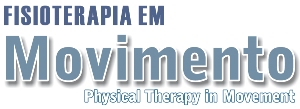Abstract
Introduction:
Spasticity acts as a limiting factor in motor and functional recovery after Stroke, impairing the performance of daily living activities.
Objective:
To analyze the influence of spasticity on main muscle groups and to associate it with motor impairment and functional level of chronic hemiparetic patients after stroke.
Methods:
Twenty-seven chronic hemiparetic patients of both sexes were selected at the Physical Therapy and Occupational Therapy Service of the Unicamp Clinics Hospital. Assessments were carried out in two sessions, in the first one the motor impairment (Fugl-Meyer Assessment - FM) and functional impairment (Barthel Index - BI) were evaluated, and in the second, the degree of spasticity of the main muscle groups (Modified Ashworth Scale - MAS).
Results:
A negative correlation was detected between upper limb spasticity and motor and functional impairment. No muscle group evaluated in the lower limbs showed correlation between muscle tone and the level of impairment of the lower extremity on FM and the functional level measured by BI.
Conclusion:
Spasticity has been shown to be a negative influence factor in the level of motor and functional impairment of the upper limbs of chronic hemiparetic patients after stroke.
Keywords:
Stroke; Hemiparesis; Spasticity
